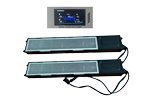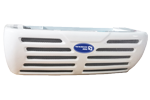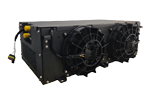1. The composition and working principle of the refrigeration system
As shown in the figure below, the Car air-conditioning refrigeration system includes an air-conditioning compressor, condenser, liquid storage tank (now Car is basically integrated with the condenser), evaporator, air-conditioning pipeline, expansion valve and so on. With the development of automobile air-conditioning technology, evaporators and expansion valves are basically integrated in the air-conditioning HVAC. In addition to these two, HVAC also integrates various sensors and actuators such as blowers, heaters and air-conditioning systems.
The work of the refrigeration system is the process of continuous vaporization and liquefaction of the refrigerant. With the compressor and the center of the expansion valve as the boundary, the entire refrigeration cycle can be divided into high and low pressure parts. The details can be understood from the above figure. The circulation process of the refrigerant in the system can be divided into 4 working processes, as follows:
1. Compression. The low-temperature and low-pressure refrigerant gas processed by the evaporator is sucked by the compressor and compressed into high-temperature and high-pressure gas, and then input to the condenser.
2. Condensation releases heat. The high-temperature and high-pressure refrigerant gas enters the condenser. Due to the decrease in pressure and temperature, the refrigerant gas condenses into liquid and releases a large amount of heat to the outside atmosphere.
3. Throttling. The refrigerant liquid with higher temperature and pressure increases in volume after passing through the expansion device, and the pressure and temperature drop sharply, leaving the expansion valve as a mist (fine droplets). This is the dividing line between the high and low pressure of the refrigerant, and the expansion valve has the function of throttling.
4. Evaporation. The mist refrigerant liquid enters the evaporator, so the boiling point of the refrigerant is much lower than the temperature in the evaporator, so the refrigerant liquid evaporates into a gas. In the evaporation process, a large amount of surrounding heat is absorbed, and then the low-temperature and low-pressure refrigerant vapor enters the compressor.









.png)






